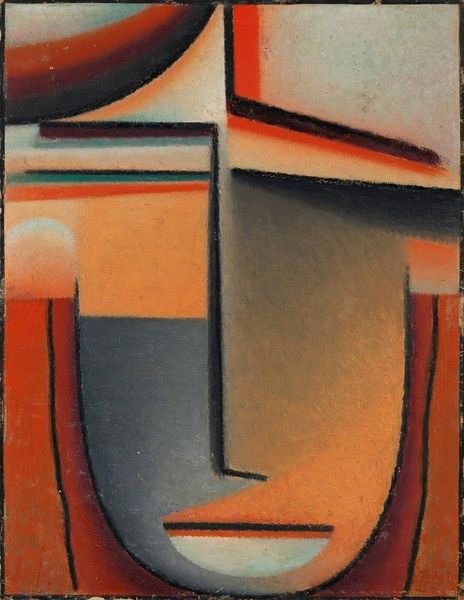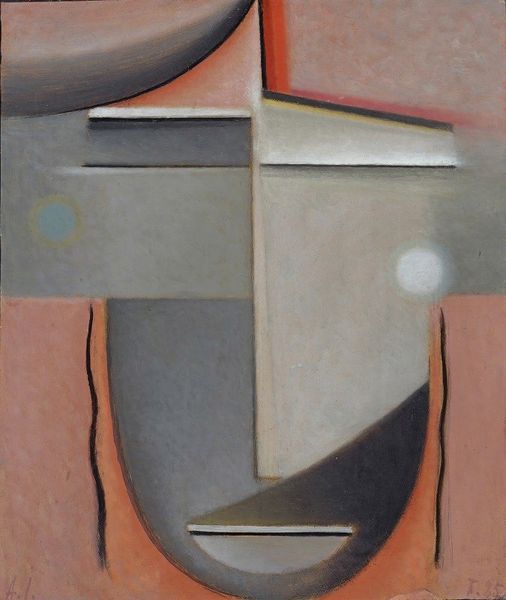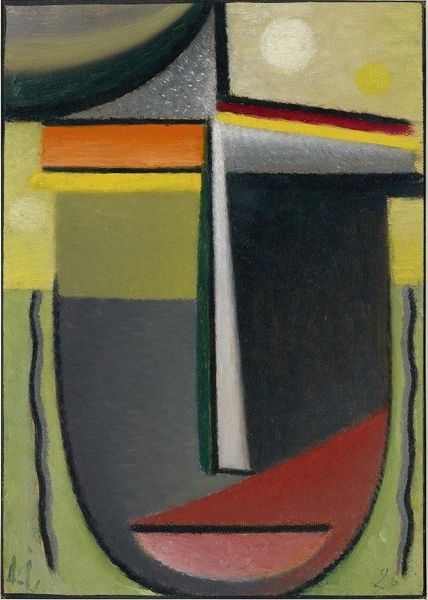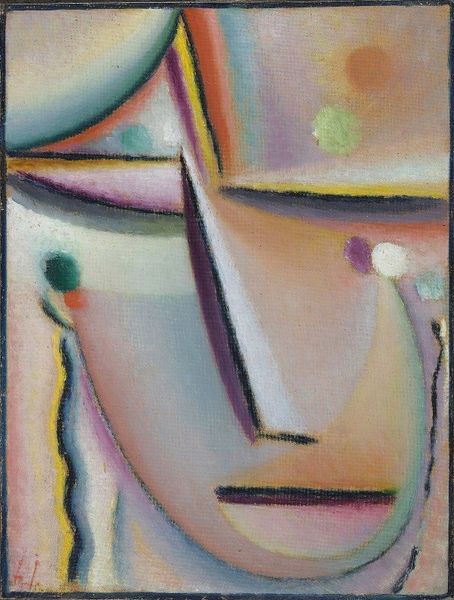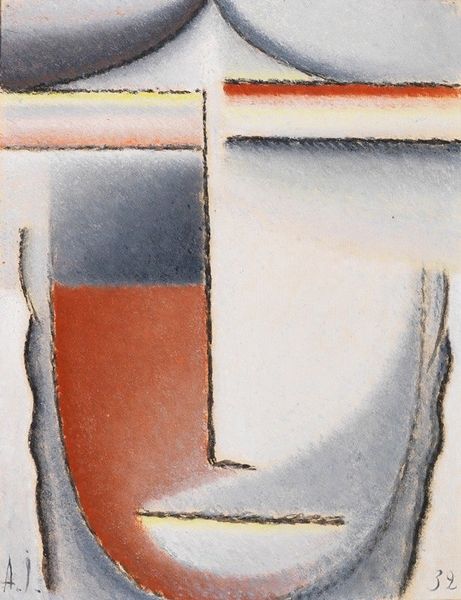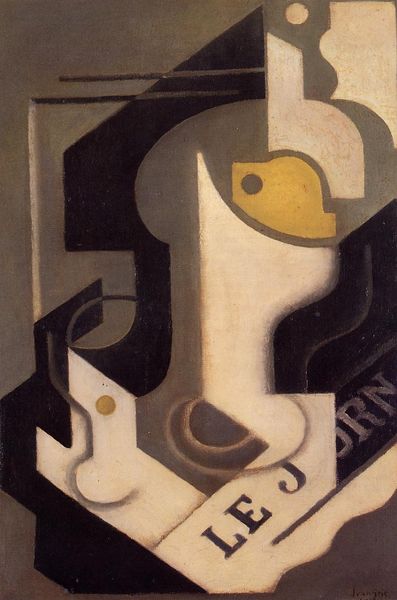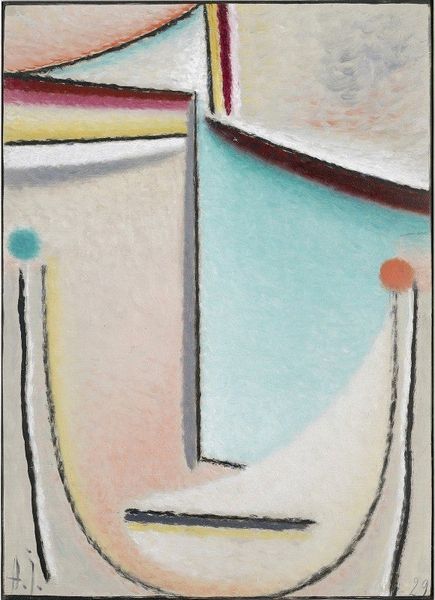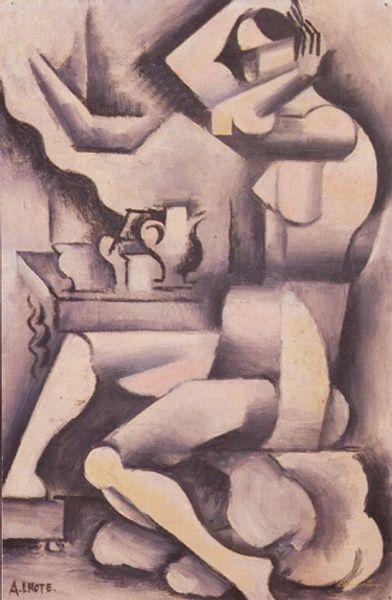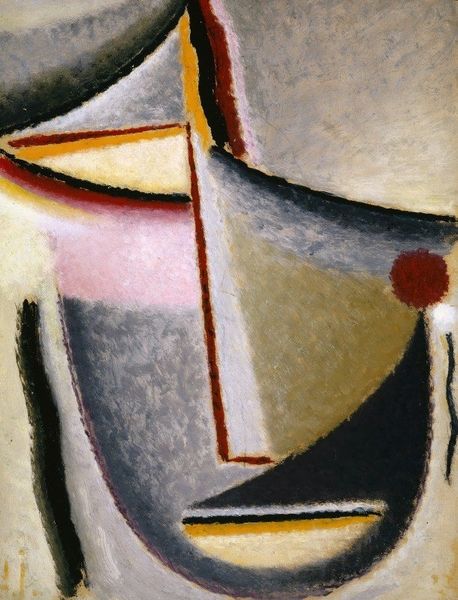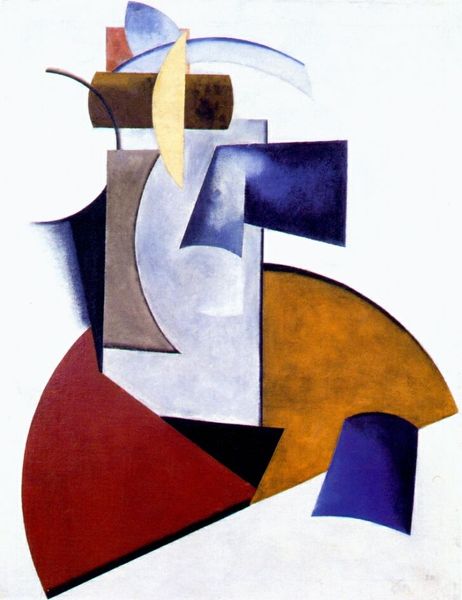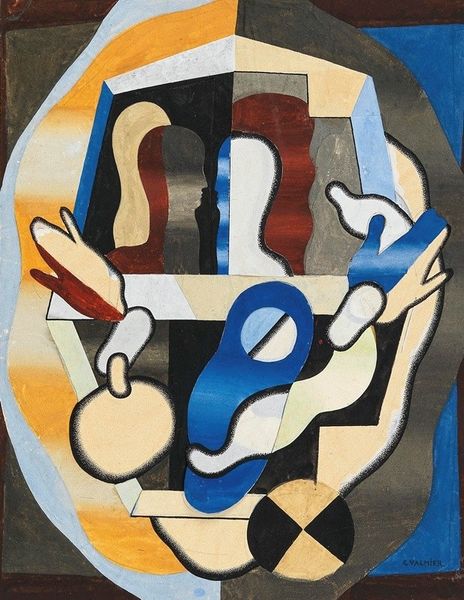
oil-paint
#
portrait
#
oil-paint
#
german-expressionism
#
abstract
#
geometric
#
expressionism
#
portrait art
Copyright: Public Domain: Artvee
Curator: Here we have Alexej von Jawlensky’s "Abstract Head, Evening," painted in 1927 using oil on canvas. Editor: My immediate reaction is…peaceful. Despite the angular forms, the muted blues and ochres evoke a sense of tranquility, like a landscape at dusk, distilled to its most elemental shapes. Curator: Interesting. Looking at his technique, it is compelling to see how Jawlensky reduced the face to geometric forms—primarily lines and curves—to convey essence. What labor went into the preparation of these paints, what social environment helped create this expression of inner reflection? Editor: Absolutely, and it is vital to consider the broader socio-political context. Jawlensky, painting this during the interwar period, in a time of significant social upheaval and artistic experimentation. We can even look through the lens of post-structuralist theories and consider the artwork itself as a reflection on shifting gender roles and anxieties surrounding identity. Curator: His consistent use of oil paint seems deliberate; consider the tactile quality, the possibilities for layering and blending pigments. Jawlensky's process involved repeatedly reworking his canvases. It raises the question: how did this choice of material inform his spiritual journey? Editor: Material certainly contributes, but that focus shifts for me when looking at the image of the face; even abstract, the piece embodies a quiet contemplation. Are we not invited to confront our humanity as both individuals and participants of various intersectional groups, class, sexual orientation, culture, to name only a few. Curator: These portraits of faces are, at the core, products, they are things. The very act of repeated material intervention—applying and reapplying paint, scraping it away, redefining form—points towards the labor and intentionality involved in making. And the artist as maker! Editor: I think that it really depends how far we want to abstract labor as process from social questions and meanings as expression, however indirect. Both approaches help us. Curator: True. What’s special here is to appreciate not only his abstract portraiture’s artistic achievement but also its unique exploration through the labor of art creation. Editor: Agreed, together we can read this enigmatic, elemental head—both as an historical statement, as an enduring image of personal introspection.
Comments
No comments
Be the first to comment and join the conversation on the ultimate creative platform.
